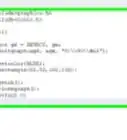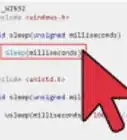X
wikiHow is a “wiki,” similar to Wikipedia, which means that many of our articles are co-written by multiple authors. To create this article, volunteer authors worked to edit and improve it over time.
This article has been viewed 83,851 times.
Learn more...
Looking for a new challenge to build upon your basic C++ coding experience? Start with step one to make a basic addition, subtraction, multiplication, and division calculator using C++ coding.
Steps
-
1Create source file. Create source file to start writing C++ program.
-
2Declare Headers. Begin writing in source file, using #include declare headers iostream and iomanip and using the identifier, using namespace declare std;.
#include <iostream> #include <iomanip> using namespace std;
Advertisement -
3Create main. Create the main statement you are going to write the code in. Add the return statement at end of code in the main function.
int main() { return 0; }
-
4Create variables. Begin code between brackets of the main statement before the return statement. Declare int variables num1 and num2, and char variable opr.
int num1, num2; char opr;
-
5Get values for num1 and num2. Use the cout command to prompt the user to enter two numbers. Using cin Assign the input to variables num1 and num2.
cout << "Enter two integers: "; cin >> num1 >> num2;
-
6Get operator for opr. Use the cout command to prompt user to enter an operator for the equation. Using cin assign the input to the char variable, opr.
cout << "Enter operator: + (addition), - (subtraction)," << " * (multiplication), / (division): "; cin >> opr; cout << endl;
-
7Create output statement. Use cout to output results of what was entered then begin switch statement to find the result.
cout << num1 << " " << opr << " " << num2 << " = "; switch (opr){ }
-
8Declare case ‘+’. Make case statement for when the user wants to do addition using case, use cout to output the product of num1 + num2, end the case with break.
case '+': cout << num1 + num2 << endl; break;
-
9Declare case ‘-’. Make case statement for when the user wants to do subtraction using case. Use cout to output the product of num1 - num2, and end the case with break.
case'-': cout << num1 - num2 << endl; break;
-
10Declare case ‘*’. Make case statement for when the user wants to do multiplication using case. Use cout to output the product of num1 * num2, and end the case with break.
case'*': cout << num1 * num2 << endl; break;
-
11Declare case ‘/’. Make case statement for when the user wants to do division. For this case though you have to use an if and else statement in case the user tries to divide by zero, if the number is not zero use cout to output the product of num1 / num2, else if it is zero use cout to output a statement letting the use know the problem.
case'/': if (num2 != 0) cout << num1 / num2 << endl; else cout << "ERROR \nCannot divide by zero" << endl; break;
-
12Add a default statement. Include the default statement within the switch structure. Default statement lets the user know when variables enter are not the correct operators. End the switch after the default statement.
default: cout << "Illegal operation" << endl; }
-
13Run the program. Go to the build menu on the top of the screen and click build program, then press ctrl 5 on the keyboard to run it. If there are errors the compiler will show their location.
- Here is the final code:
#include <iostream> #include <iomanip> using namespace std; int main() { int num1, num2; char opr; cout << "Enter two integers: "; cin >> num1 >> num2; cout << endl; cout << "Enter operator: + (addition), - (subtraction)," << " * (multiplication), / (division): "; cin >> opr; cout << endl; cout << num1 << " " << opr << " " << num2 << " = "; switch (opr){ case '+': cout << num1 + num2 << endl; break; case'-': cout << num1 - num2 << endl; break; case'*': cout << num1 * num2 << endl; break; case'/': if (num2 != 0) cout << num1 / num2 << endl; else cout << "ERROR \nCannot divide by zero" << endl; break; default: cout << "Illegal operation" << endl; } return 0; }
- Here is the final code:
Advertisement
Community Q&A
-
QuestionHow can I use C++ to create scientific calculator?
 Community AnswerCode is too long to put here. Try asking the question on stackoverflow, where people have the space to write out code. I suggest (if you're really passionate) you learn C++ and make the code yourself. It won't be a hard code (some people write one as they learn C++).
Community AnswerCode is too long to put here. Try asking the question on stackoverflow, where people have the space to write out code. I suggest (if you're really passionate) you learn C++ and make the code yourself. It won't be a hard code (some people write one as they learn C++). -
QuestionHow do I make this calculator output to two decimal places?
 Community AnswerPress the S-to-D button, or just put a 0 at the end.
Community AnswerPress the S-to-D button, or just put a 0 at the end. -
QuestionCan I make games using C++ coding?
 Community AnswerYes. C++ is a very good language to create a game in. Although it will be more difficult than a language like Java, it will be much faster and more efficient.
Community AnswerYes. C++ is a very good language to create a game in. Although it will be more difficult than a language like Java, it will be much faster and more efficient.
Advertisement
Things You'll Need
- Computer
- C++ compiler (Examples use Visual Basic)
About This Article
Advertisement

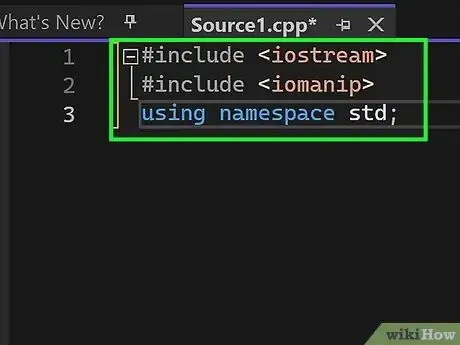
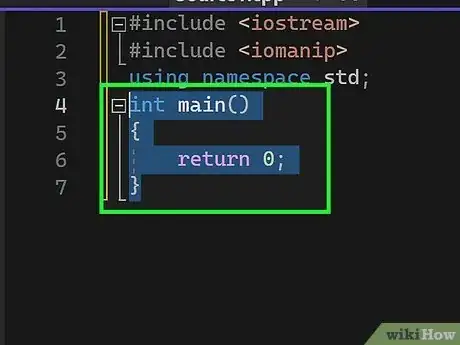
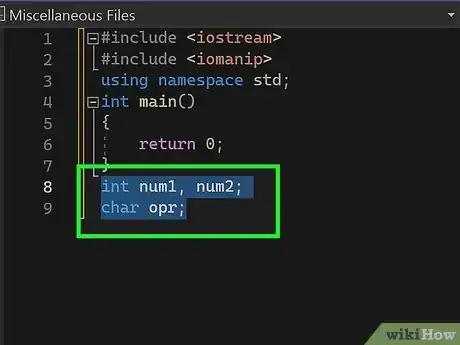

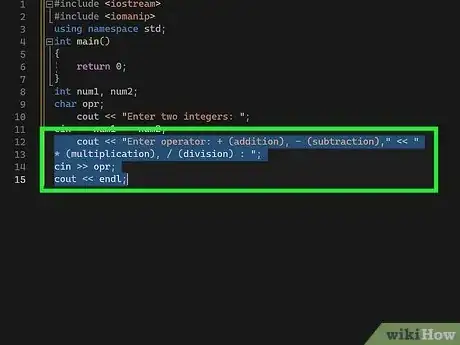
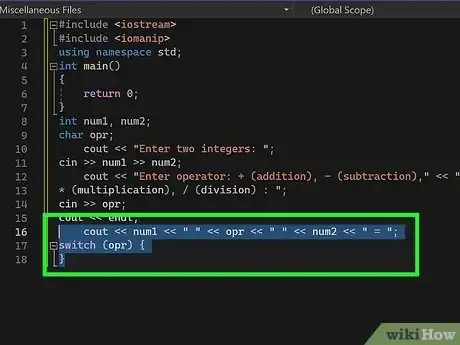
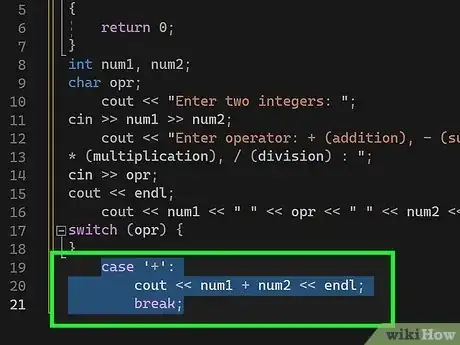
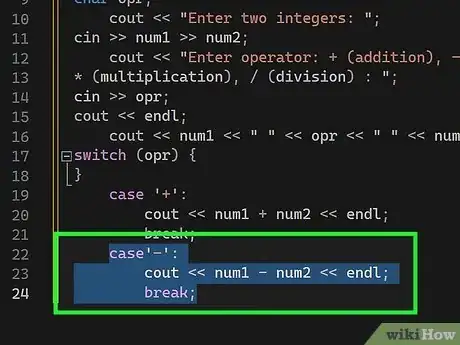
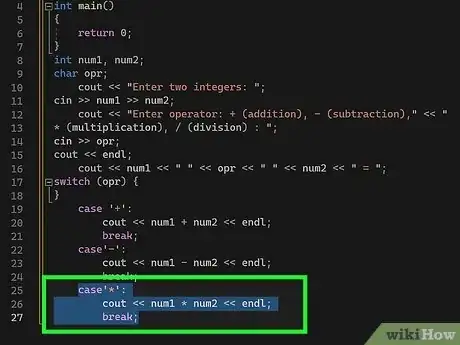
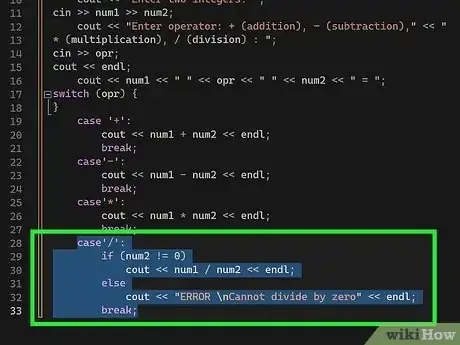

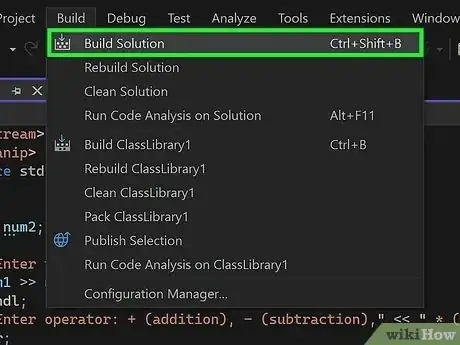
-Step-16-Version-3.webp)


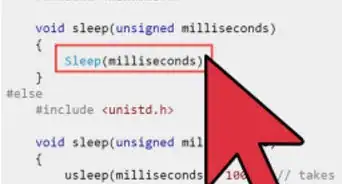

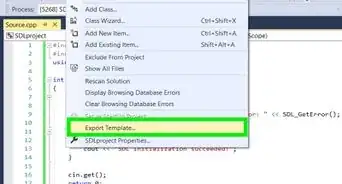


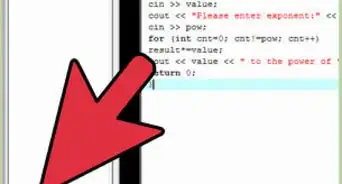








-Step-16-Version-3.webp)

